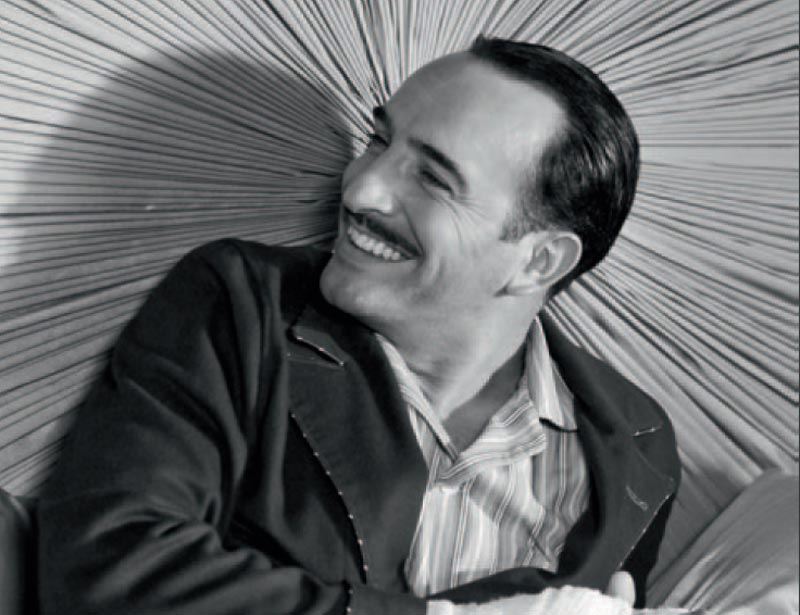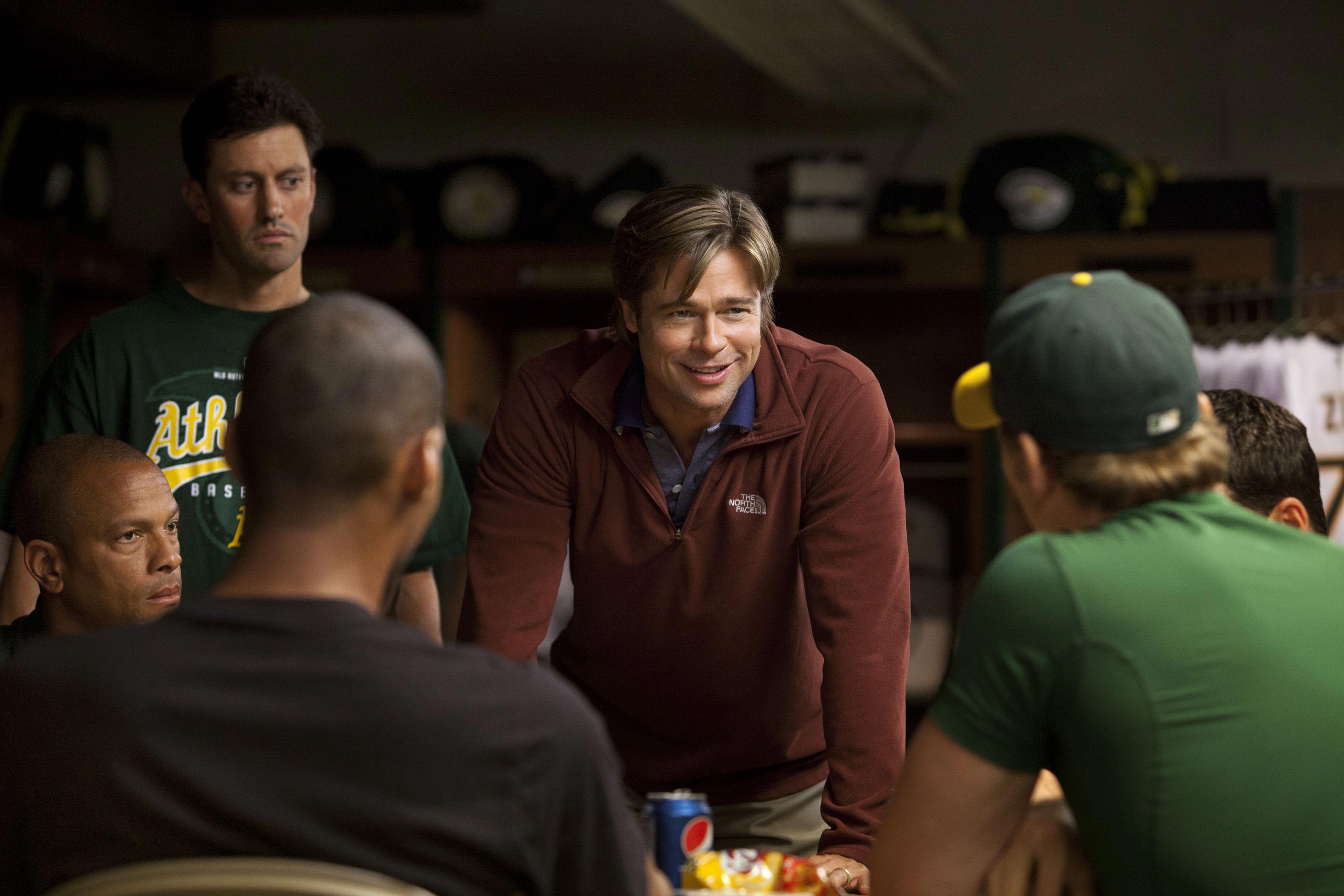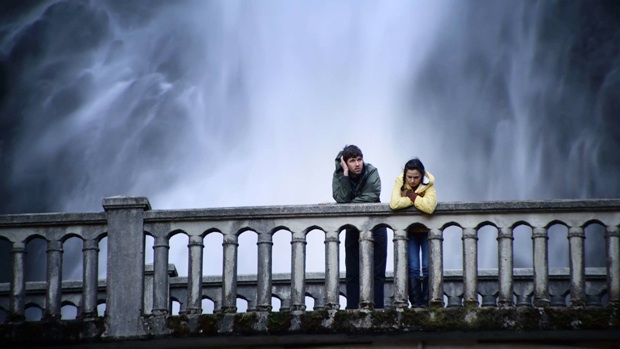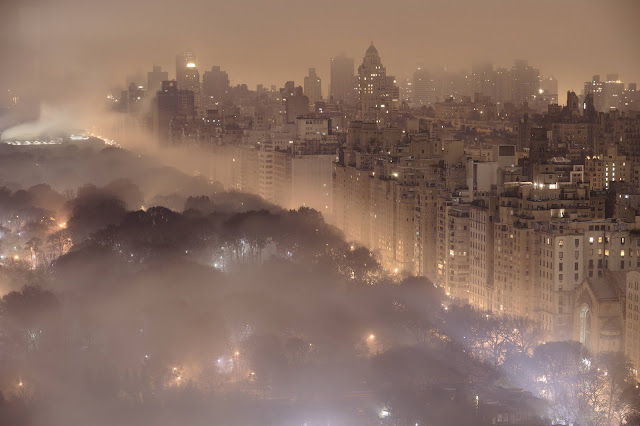Premiering in the Un Certain Regard section of the 2011 Cannes Film Festival and released on a very limited basis in one of the leanest month on the U.S. theatrical schedule, Gerard Naranjo's Miss Bala bears witness both to the formal experimentation characteristic of the former and to the semi-exploitation orientation of the latter. Naranjo and cinematographer Mátyás Erdély bring an exceedingly fluid long-take aesthetic to Miss Bala's border world of Narco wars and beauty pageants, staging the film's on-going flow of action and the frequently disrobed body of the film's ex-model lead, Stephanie Sigman, in a graceful choreography of contiguous on and off-camera spaces.
Among the most memorable of Naranjo and Erdély's one-take tours de force is an early, off-balance composition in a nightclub powder-room that commences with Miss Baja hopeful Laura Guerrero (Sigman) standing alone in the right half of a static, divided frame. Suddenly, a para-military hit crew repels down the wall that splits the image, filling the empty middle distance in the left half; as the assassins check the toilet stalls on the same side of the composition, Laura crouches down into a nearby corner with the camera accordingly following, reframing the female lead in a far more constricted full. As Laura cowers, exposed to the gang against the wall, the spectator is made to focus (along with the protagonist) on the off-camera field, cued in not only to Laura's frightened reactions directed toward the previously visible space, but also to the sounds that inscribe the continuous, out-of-the-frame action.
Within this exemplary passage, Miss Bala's navigation of objective and subjective states emerges, with Laura's point-of-view ultimately articulated in the tight re-framing that occurs along with her attempt to escape view. Earlier, when she first arrives at that same Millennium night spot, the filmmakers' camera moves independent of character motivation, only joining Laura consequently as the apparatus propels forward in the same direction as the striding lead. In so doing, Naranjo provides an approximation but not a literalization of Laura's phenomenological experience. Though the camera is outside Laura, it effectively doubles here perception.
Elsewhere, to return to the economy of revelation and concealment that defines Miss Bala's registration of spaces, Laura's later escape from the bathroom occurs at the moment of her sudden reappearance in the upper recesses of the re-framed interior, climbing through a distant window. In so doing, Naranjo retroactively calls attention to the fact that Laura's dramatic act has been occurring off-screen all along, with the particularities of this mobile framing a matter of authorial imposition. The camera's point-of-view in this passage is that of an author who willfully leaves his heroine and her subjective experience only to treat her dramatic exit as an unexpected visual punctum moments later.
While Miss Bala's achievement might just be most conspicuously formal ultimately, it does still effectively inscribe the personal toll of the War on Drugs on the film's unwitting protagonist, providing a harrowing narrative of the variety of abuses she experiences - both on and off-camera, with the latter no less moving than the former - as well as a plausible account of how the under-class Tijuana native becomes a getaway driver and mule for the narcotics syndicate. Miss Bala is indeed her fundamentally tragic and contemporary story, even when Naranjo's exceptional visual set-pieces momentarily obscure this fact.
Mission: Impossible - Ghost Protocol (2011), master animator Brad Bird's live-action debut, from a screenplay by Josh Applebaum and André Nemec, dispels any questions of its director's facility for or fitness to the composited photographic medium with a work that not only plays to the form's visceral strengths - this is the so-called action thrill ride at its, well, most thrilling; Ghost Protocol is one of the few comparatively deserving films at the top of the domestic box office charts - but also one that manages to reflexively incorporate the new-to-the-director technology back into the tension-filled set-pieces themselves. With respect to the latter, Ethan (Tom Cruise) and Benji's (Simon Pegg) manipulation of a screen inside the Kremlin in an effort to provide the photo-real illusion of a space, rather than the space itself, crisply encapsulates the film's composited CGI form in a manner that partially recalls Ratatouille's (2007) allegorization of computer animation in its non-human creator. Ever the auteur, Bird again showcases his self-consciousness in producing an analogy to the specific medium of his production.
Bird's authorship is even more prominent in Ethan's superhuman feats, running up and down the world's tallest building - obsessed with numbing heights, Ghost Protocol gets the most out of the composite digital form's ability to make these moments photo-real - or simply punching his way out of a Russian prison without a moment to spare. The more obvious and fruitful point-of-reference for Ghost Protocol accordingly is Bird's Pixar masterpiece The Incredibles (2004), with which it likewise shares its relatively corny and occasionally topical sense of humor - Cruise's failed marriage and Jeremy Renner's homosexuality both receive narrative cameos - a sidekick in Benji who seems to suggest a partial re-imagining of pre-Syndrome Buddy Pine or perhaps Dash, and most notably, an acknowledgement of global terrorism, which thanks to Ethan's persistent unwillingness to give in, is ultimately curtailed - though not at the precise moment that Ethan declares the "Mission Accomplished!" In Bird's world, as in our own, the threat will only later be neutralized.
Among the most memorable of Naranjo and Erdély's one-take tours de force is an early, off-balance composition in a nightclub powder-room that commences with Miss Baja hopeful Laura Guerrero (Sigman) standing alone in the right half of a static, divided frame. Suddenly, a para-military hit crew repels down the wall that splits the image, filling the empty middle distance in the left half; as the assassins check the toilet stalls on the same side of the composition, Laura crouches down into a nearby corner with the camera accordingly following, reframing the female lead in a far more constricted full. As Laura cowers, exposed to the gang against the wall, the spectator is made to focus (along with the protagonist) on the off-camera field, cued in not only to Laura's frightened reactions directed toward the previously visible space, but also to the sounds that inscribe the continuous, out-of-the-frame action.
Within this exemplary passage, Miss Bala's navigation of objective and subjective states emerges, with Laura's point-of-view ultimately articulated in the tight re-framing that occurs along with her attempt to escape view. Earlier, when she first arrives at that same Millennium night spot, the filmmakers' camera moves independent of character motivation, only joining Laura consequently as the apparatus propels forward in the same direction as the striding lead. In so doing, Naranjo provides an approximation but not a literalization of Laura's phenomenological experience. Though the camera is outside Laura, it effectively doubles here perception.
Elsewhere, to return to the economy of revelation and concealment that defines Miss Bala's registration of spaces, Laura's later escape from the bathroom occurs at the moment of her sudden reappearance in the upper recesses of the re-framed interior, climbing through a distant window. In so doing, Naranjo retroactively calls attention to the fact that Laura's dramatic act has been occurring off-screen all along, with the particularities of this mobile framing a matter of authorial imposition. The camera's point-of-view in this passage is that of an author who willfully leaves his heroine and her subjective experience only to treat her dramatic exit as an unexpected visual punctum moments later.
While Miss Bala's achievement might just be most conspicuously formal ultimately, it does still effectively inscribe the personal toll of the War on Drugs on the film's unwitting protagonist, providing a harrowing narrative of the variety of abuses she experiences - both on and off-camera, with the latter no less moving than the former - as well as a plausible account of how the under-class Tijuana native becomes a getaway driver and mule for the narcotics syndicate. Miss Bala is indeed her fundamentally tragic and contemporary story, even when Naranjo's exceptional visual set-pieces momentarily obscure this fact.
Mission: Impossible - Ghost Protocol (2011), master animator Brad Bird's live-action debut, from a screenplay by Josh Applebaum and André Nemec, dispels any questions of its director's facility for or fitness to the composited photographic medium with a work that not only plays to the form's visceral strengths - this is the so-called action thrill ride at its, well, most thrilling; Ghost Protocol is one of the few comparatively deserving films at the top of the domestic box office charts - but also one that manages to reflexively incorporate the new-to-the-director technology back into the tension-filled set-pieces themselves. With respect to the latter, Ethan (Tom Cruise) and Benji's (Simon Pegg) manipulation of a screen inside the Kremlin in an effort to provide the photo-real illusion of a space, rather than the space itself, crisply encapsulates the film's composited CGI form in a manner that partially recalls Ratatouille's (2007) allegorization of computer animation in its non-human creator. Ever the auteur, Bird again showcases his self-consciousness in producing an analogy to the specific medium of his production.
Bird's authorship is even more prominent in Ethan's superhuman feats, running up and down the world's tallest building - obsessed with numbing heights, Ghost Protocol gets the most out of the composite digital form's ability to make these moments photo-real - or simply punching his way out of a Russian prison without a moment to spare. The more obvious and fruitful point-of-reference for Ghost Protocol accordingly is Bird's Pixar masterpiece The Incredibles (2004), with which it likewise shares its relatively corny and occasionally topical sense of humor - Cruise's failed marriage and Jeremy Renner's homosexuality both receive narrative cameos - a sidekick in Benji who seems to suggest a partial re-imagining of pre-Syndrome Buddy Pine or perhaps Dash, and most notably, an acknowledgement of global terrorism, which thanks to Ethan's persistent unwillingness to give in, is ultimately curtailed - though not at the precise moment that Ethan declares the "Mission Accomplished!" In Bird's world, as in our own, the threat will only later be neutralized.
















































